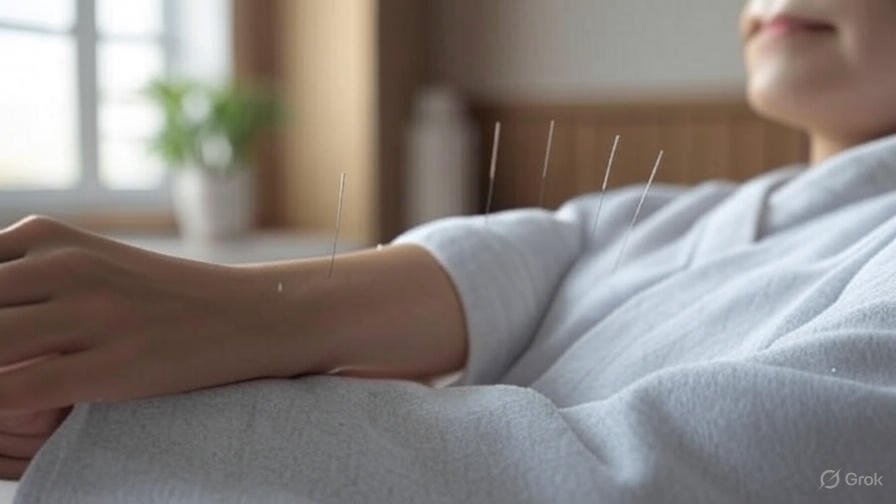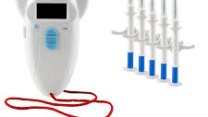
Acupuncture for Blood Flow: How It Naturally Boosts Circulation in Hands and Feet
Improving Peripheral Circulation with Acupuncture: Natural Support for Hands & Feet
Do your hands and feet constantly feel cold or numb, even in warm weather? You might be dealing with poor peripheral circulation. While conventional treatments often focus on medications and compression techniques, a growing number of individuals are turning to acupuncture for blood flow to naturally stimulate circulation and restore comfort.
In this blog, we dive deep into how acupuncture supports blood flow, the science behind it, and what you can expect from treatment—especially if you’re struggling with circulation in your extremities.
What Is Peripheral Circulation and Why Does It Matter?
Peripheral circulation refers to the movement of blood through the smallest blood vessels in the body’s extremities—hands, fingers, feet, and toes. This microcirculation ensures oxygen and nutrients are delivered to tissues farthest from the heart.
When this circulation becomes impaired, symptoms like cold extremities, tingling, cramping, or even swelling can arise. Left untreated, it can lead to more serious complications like tissue damage or neuropathy.
Causes of Poor Circulation in Hands and Feet
There are several possible causes of impaired blood flow in the extremities:
- Diabetes and peripheral neuropathy
- Raynaud’s disease
- Chronic venous insufficiency
- Sedentary lifestyle
- Smoking
- Poor vascular health or clotting disorders
While these may require medical diagnosis and intervention, supportive therapies like acupuncture for blood flow can complement traditional treatments and enhance circulation holistically.
How Acupuncture Enhances Blood Flow
Acupuncture is a centuries-old Traditional Chinese Medicine (TCM) practice that involves inserting thin needles into specific points along the body’s meridians. These points are believed to stimulate energy (Qi) flow and influence organ function, including circulation.
Modern studies show that acupuncture increases nitric oxide levels, which causes blood vessels to dilate—enhancing blood flow to the targeted regions.
Mechanisms at Work:
- Vasodilation – Acupuncture promotes nitric oxide production, relaxing blood vessels and increasing blood volume.
- Neurovascular modulation – Needling influences the nervous system, prompting it to regulate blood pressure and flow more efficiently.
- Anti-inflammatory effects – Reducing systemic inflammation can also help alleviate constricted or damaged blood vessels.
In short, acupuncture for blood flow can address both the root causes and the symptoms of poor circulation in a natural, drug-free way.
Evidence-Based Research Supporting Acupuncture
While traditional medicine is often cautious about integrative therapies, recent studies suggest acupuncture does have measurable effects on blood circulation.
- A 2018 review in Microvascular Research found that acupuncture improved peripheral perfusion and microcirculation in subjects with cardiovascular issues.
- A study in Autonomic Neuroscience noted that acupuncture increased skin temperature (a sign of improved blood flow) in patients with Raynaud’s disease.
- Researchers at Harvard Medical School observed that acupuncture enhanced nitric oxide levels locally and systemically.
Though more large-scale studies are needed, early findings support the use of acupuncture for blood flow as a legitimate circulatory therapy.
What to Expect During an Acupuncture Session
If you’ve never tried acupuncture before, here’s what to expect:
- Initial Consultation: Your practitioner will ask about symptoms, health history, and circulation concerns.
- Treatment Plan: They may focus on specific meridians related to the heart, kidneys, and liver—key organs influencing circulation.
- Needling Session: Very fine, sterile needles are inserted into acupuncture points, typically on the legs, arms, hands, and feet. Most people feel little to no discomfort.
- Duration: Sessions last about 30–60 minutes and are often recommended weekly or bi-weekly for consistent results.
As part of a comprehensive plan, acupuncture for blood flow may be combined with herbal medicine, cupping, or lifestyle recommendations to enhance outcomes.
Benefits of Acupuncture for Peripheral Circulation
When targeted properly, acupuncture offers several benefits for those struggling with poor peripheral circulation:
- Warmth and comfort in extremities
- Reduced numbness or tingling
- Less cramping or pain
- Improved tissue healing in chronic conditions
- Enhanced mobility and physical function
More importantly, it offers a natural way to improve symptoms without relying solely on medications.
Who Can Benefit from Acupuncture for Blood Flow?
This therapy may be particularly helpful for:
- Individuals with diabetes and related nerve damage
- Patients with Raynaud’s syndrome or cold extremities
- Seniors experiencing sluggish circulation
- Athletes recovering from soft tissue injuries
- Desk workers with sedentary habits
Whether you’re looking to manage chronic symptoms or just want to boost overall vascular health, acupuncture for blood flow is worth considering.
Complementary Lifestyle Strategies to Support Circulation
While acupuncture plays a crucial role, lifestyle changes can further amplify the results:
- Stay hydrated and avoid excessive caffeine
- Exercise regularly (walking, swimming, yoga)
- Use warm compresses for cold hands and feet
- Massage and elevate the limbs
- Quit smoking and reduce alcohol intake
Combined with acupuncture for blood flow, these strategies can provide long-lasting improvements.
Final Thoughts: A Natural Path to Warmer Hands and Feet
Poor peripheral circulation isn’t just uncomfortable—it can interfere with your daily life and lead to long-term complications. Fortunately, acupuncture offers a gentle yet powerful approach to supporting blood flow and revitalizing your limbs.
Whether you’ve tried everything else or are looking for a more holistic treatment option, acupuncture for blood flow may be the missing piece. With growing research, a strong safety profile, and a focus on whole-body wellness, acupuncture is steadily earning its place in circulatory care.








